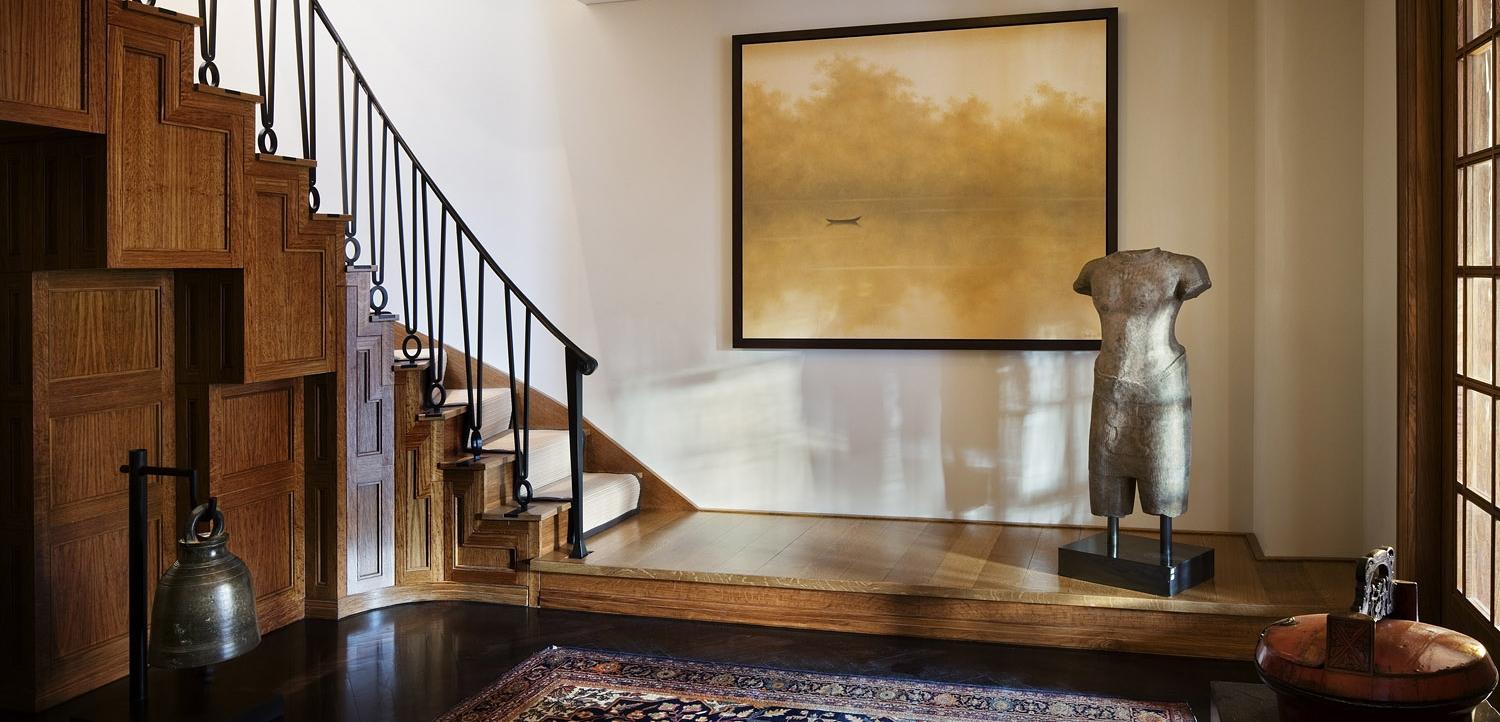When it came time for Campion Platt to publish his first monograph, he didn’t turn to just anyone for its foreword.
No, the architect and interior designer who strives to take the edge off modernism with his trademark soft palette sought out an old friend, Jay McInerney.
The result is “Made to Order,” a series of 18 essays and as many well-photographed living spaces designed by the man whose client roster includes Al Pacino, Meg Ryan and Conan O’Brien. It leads with two pages of knowing endorsement from the author of “Bright Lights, Big City” and more recently, “How It Ended.”
It’s a book that’s spare and sumptuous at once.
“Our original intent was a bedside table book,” Platt says. “It came out not quite so small – it’s more like a coffee table book – but I’m happy with the results.”
The story line for each project is a distillation of space and client needs. It’s meant as a reference work, a place to glean whatever a designer need know to do his or her job.
“Story-telling to me is getting clues and markers from clients, with tearsheets, look-books and other homes,” he says. “I’m looking for the overall story – their background, their likes and dislikes. Then I’ll write a loose program, but the story is not that.”
He cites an old Sag Harbor captain’s house from “Made to Order” as an example.
“I thought I was transforming an historic house, with this notion of a captain travelling to China and bringing back pieces from abroad,” he says. “But the house had to be kid-friendly too. It’s definitely bespoke – it’s made to order – but made to be proper for its location too.”
His design for a modernist Gwathmey-Siegel high-rise at Astor Place embellishes an existing space with an overlay of curving sofa hugging exterior wall. “I love floor-to-glass ceilings, and the idea of a high rise, and the beautiful view of the world,” he says. “Part of the modernism dilemma, though, is how to make it comfortable, because in some cases it’s cold. I think it’s all about texture and form – about translating the modern lexicon into the form.”
A featured writer’s retreat for Jay McInerney, who knew the designer well enough to give him carte blanche with his one-bedroom apartment, was an experiment. “I was launching my new line of campaign furniture,” he says. “I had to make it all fit. It was an exercise in collaboration between the apartment and the furniture.”
The design works, in a clean and complex way. Telling its tale is a classic image of William Faulkner staring silently from bedroom wall.
It is, as McInerney wrote in his foreword to “Made to Order,” a matter of “modernism with soul.”
For more, go here.
[slideshow id=219]


